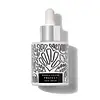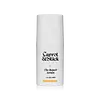What's inside
What's inside
 Key Ingredients
Key Ingredients

 Benefits
Benefits

 Ingredients Side-by-side
Ingredients Side-by-side

Water
Skin ConditioningNiacinamide
SmoothingGlycerin
HumectantAcacia Senegal Gum
MaskingHydrolyzed Rhizobian Gum
Camellia Sinensis Leaf Extract
AntimicrobialChamomilla Recutita Flower Extract
MaskingPCA
HumectantSodium PCA
HumectantSh-Oligopeptide-1
Skin ConditioningSh-Oligopeptide-2
Skin ConditioningSh-Polypeptide-1
Skin ConditioningSh-Polypeptide-11
Sh-Polypeptide-9
Skin ConditioningSodium Hyaluronate
HumectantAcetyl Hexapeptide-8
HumectantArginine
MaskingAspartic Acid
MaskingAcetyl Glutamine
Skin ConditioningLecithin
EmollientCarnitine
CleansingAlanine
MaskingGlycine
BufferingHistidine
HumectantIsoleucine
Skin ConditioningPhenylalanine
MaskingProline
Skin ConditioningSerine
MaskingThreonine
Valine
MaskingCaffeine
Skin ConditioningRuscus Aculeatus Root Extract
AstringentChenopodium Quinoa Seed Extract
Skin ConditioningBacillus
Skin ConditioningCitrus Reticulata Peel Extract
Skin ConditioningCodonopsis Lanceolata Extract
AntioxidantCoix Lacryma-Jobi Ma-Yuen Seed Extract
Skin ConditioningChrysanthemum Parthenium Extract
Skin ConditioningDigitaria Ciliaris Flower Extract
EmollientGlycyrrhiza Glabra Root Extract
BleachingNelumbo Nucifera Seed Extract
AntimicrobialPaeonia Suffruticosa Root Extract
Skin ProtectingPaeonia Albiflora Flower Extract
TonicPolygonum Odoratum Extract
Skin ConditioningSodium Lactate
BufferingPolyglutamic Acid
Skin ConditioningXanthan Gum
EmulsifyingButylene Glycol
Humectant1,2-Hexanediol
Skin ConditioningCitric Acid
BufferingCaprylyl Glycol
EmollientSodium Benzoate
MaskingSodium Levulinate
Skin ConditioningPotassium Sorbate
PreservativePhenoxyethanol
PreservativeWater, Niacinamide, Glycerin, Acacia Senegal Gum, Hydrolyzed Rhizobian Gum, Camellia Sinensis Leaf Extract, Chamomilla Recutita Flower Extract, PCA, Sodium PCA, Sh-Oligopeptide-1, Sh-Oligopeptide-2, Sh-Polypeptide-1, Sh-Polypeptide-11, Sh-Polypeptide-9, Sodium Hyaluronate, Acetyl Hexapeptide-8, Arginine, Aspartic Acid, Acetyl Glutamine, Lecithin, Carnitine, Alanine, Glycine, Histidine, Isoleucine, Phenylalanine, Proline, Serine, Threonine, Valine, Caffeine, Ruscus Aculeatus Root Extract, Chenopodium Quinoa Seed Extract, Bacillus, Citrus Reticulata Peel Extract, Codonopsis Lanceolata Extract, Coix Lacryma-Jobi Ma-Yuen Seed Extract, Chrysanthemum Parthenium Extract, Digitaria Ciliaris Flower Extract, Glycyrrhiza Glabra Root Extract, Nelumbo Nucifera Seed Extract, Paeonia Suffruticosa Root Extract, Paeonia Albiflora Flower Extract, Polygonum Odoratum Extract, Sodium Lactate, Polyglutamic Acid, Xanthan Gum, Butylene Glycol, 1,2-Hexanediol, Citric Acid, Caprylyl Glycol, Sodium Benzoate, Sodium Levulinate, Potassium Sorbate, Phenoxyethanol
Ingredients Explained
These ingredients are found in both products.
Ingredients higher up in an ingredient list are typically present in a larger amount.
Camellia Sinensis Leaf Extract is derived from the leaves of the tea plant. Black tea, green tea, and oolong tea are all harvested from this plant.
This ingredient has many skin benefits:
This ingredient contains polyphenols, a strong antioxidant. Antioxidants help fight off molecules that damage skin cells.
On top of that, the antioxidants in green tea neutralize free-radicals from the sun. This gives the skin some extra UV protection, but should not replace sunscreen.
Many components of tea have anti-inflammatory properties.
Polyphenols and L-theanine help soothe the skin and reduce irritation. The caffeine in Camellia Sinensis Leaf Extract helps calm inflamed blood vessels.
Other compounds found in tea include: Vitamin Bs, linoleic acid, magnesium, calcium, iron, and zinc.
Research has shown both drinking Camellia Sinensis Leaf Tea and applying it to the skin can help boost skin elasticity and hydration. Studies also show using tea extract may reduce sebum, or oil, production.
Learn more about Camellia Sinensis Leaf ExtractGlycerin is already naturally found in your skin. It helps moisturize and protect your skin.
A study from 2016 found glycerin to be more effective as a humectant than AHAs and hyaluronic acid.
As a humectant, it helps the skin stay hydrated by pulling moisture to your skin. The low molecular weight of glycerin allows it to pull moisture into the deeper layers of your skin.
Hydrated skin improves your skin barrier; Your skin barrier helps protect against irritants and bacteria.
Glycerin has also been found to have antimicrobial and antiviral properties. Due to these properties, glycerin is often used in wound and burn treatments.
In cosmetics, glycerin is usually derived from plants such as soybean or palm. However, it can also be sourced from animals, such as tallow or animal fat.
This ingredient is organic, colorless, odorless, and non-toxic.
Glycerin is the name for this ingredient in American English. British English uses Glycerol/Glycerine.
Learn more about GlycerinSodium Hyaluronate is hyaluronic acid's salt form. It is commonly derived from the sodium salt of hyaluronic acid.
Like hyaluronic acid, it is great at holding water and acts as a humectant. This makes it a great skin hydrating ingredient.
Sodium Hyaluronate is naturally occurring in our bodies and is mostly found in eye fluid and joints.
These are some other common types of Hyaluronic Acid:
Learn more about Sodium HyaluronateSodium levulinate is the a sodium salt of Levulinic Acid. If dissolved in an aqueous solution, the two ingredients become identical.
It is a skin conditioning agent, meaning it helps soften and hydrate your skin.
According to Cosmetic Ingredient Review, the highest amounts of sodium levulinate are found in mouthwashes at 0.62%.
Learn more about Sodium LevulinateWater. It's the most common cosmetic ingredient of all. You'll usually see it at the top of ingredient lists, meaning that it makes up the largest part of the product.
So why is it so popular? Water most often acts as a solvent - this means that it helps dissolve other ingredients into the formulation.
You'll also recognize water as that liquid we all need to stay alive. If you see this, drink a glass of water. Stay hydrated!
Learn more about Water